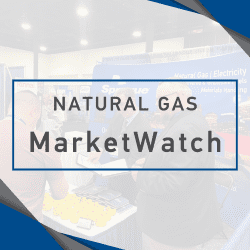Recap: Oil prices jumped after OPEC revealed that its production for the month of May decreased. Fear spread throughout the marketplace that OPEC’s spare capacity had been overstated, with Saudi Arabia and the UAE the only members that have any room to increase production. The Kingdom and the Emirates, however, has been offset by an even greater decline in production from Iraq, Libya, and Nigeria. Oil futures had traded above last week’s highs but lost traction and turned to the downside. Prices drifted between gains and losses before ending lower on the day. July WTI lost $2.00 per barrel, or 1.65%, to settle at $118.93. Front Month ICE Brent Crude for Aug. delivery lost $1.10 per barrel, or 0.90% to $121.17. Front Month NYMEX RBOB Gasoline for July delivery lost 4.15 cents per gallon, or 1.03% to $3.9938. ULSD for July delivery gained 11.06 cents per gallon, or 2.58% to $4.3940.
Market Analysis: July WTI’s failure to hold above the upper line on the ascending channel sparked a length lightening sell-off that took this spot contract below the 10-day moving average. Despite this sell-off, the main trend of this market is up and reaffirmed by its ability to take out the previous high of $123.18. We are still looking at a valid break above the upper trend, which would be confirmed by a second settlement above it. To the downside, support is seen at $115 and below that at $111.
Fundamental News: OPEC has kept to its forecast that world oil demand will exceed pre-pandemic levels in 2022, but said Russia's invasion of Ukraine and developments around the coronavirus pandemic pose a considerable risk to the forecast recovery to pre-pandemic levels. In a monthly report, OPEC maintained its forecast that world demand would increase by 3.36 million bpd in 2022, extending a recovery from 2020's decline. The report expects world consumption to surpass the 100 million bpd mark in the third quarter, in line with earlier projections, and for the 2022 average to reach 100.29 million bpd, just above the pre-pandemic rate in 2019. The report showed OPEC output in May fell by 176,000 bpd to 28.51 million bpd, due to a decline in output from Libya, Nigeria and other countries. OPEC cut its 2022 non-OPEC oil supply forecast by 300,000 bpd to 2.1 million bpd and lowered its Russian liquids production forecast by 250,000 bpd and left its U.S. output growth estimate steady. OPEC expects supply of U.S. tight oil or shale oil, to increase by 880,000 bpd in 2022, unchanged on the month.
Fitch said its new base case assumption for Brent is $105/barrel in 2022, $85/barrel in 2023 and $65/barrel in 2024. Its base case assumption for WTI is $100/barrel in 2022, $81/barrel in 2023 and $62/barrel in 2024.
Platts is reporting that as of June 10th, some 294,000 mt of gasoline have been slated to be exported to the U.S. from Northwest Europe this month. Kpler estimated some 1.45 million mt were exported in May and 678,000 mt exported in April.
Saudi state media reported that U.S. President Joe Biden will visit Saudi Arabia on July 15th-16th where he will meet Saudi King Salman and Crown Prince Mohammed bin Salman. White House's National Security Council spokesman, John Kirby, said U.S. President Joe Biden will discuss energy production as part of his trip this month to the Middle East, including to Saudi Arabia.
Early Market Call – as of 8:25 AM EDT
WTI – July $11850, down 43 cents
RBOB – July $3.9485, down 4.45 cents
HO – July $4.4226, up 2.92 cents
View the Sprague Refined Products Market Watch Report in a downloadable pdf format by clicking below.
Click to view more online:
Heating Oil Supplier
Diesel Supplier
View market updates
View our refined products glossary
Go to SpraguePORT online










